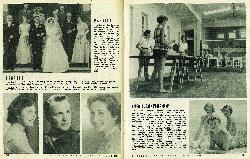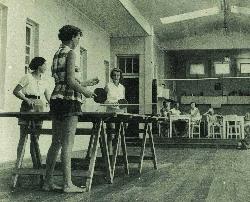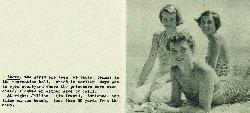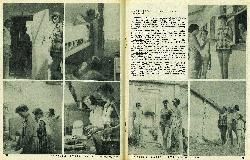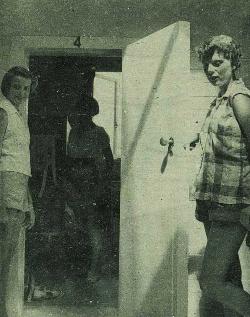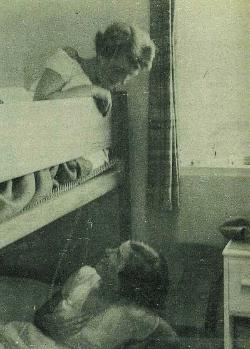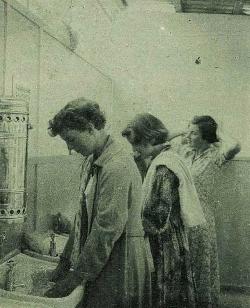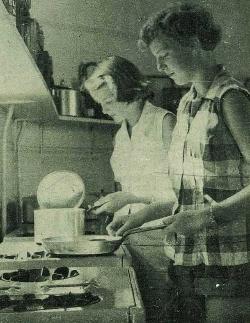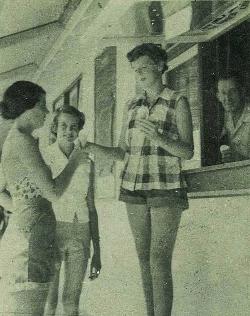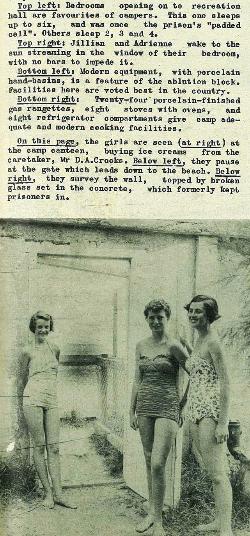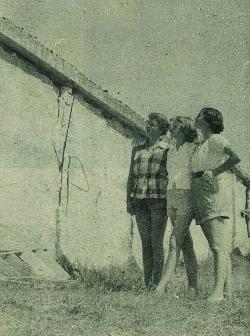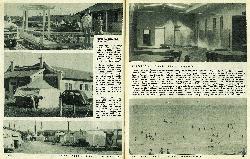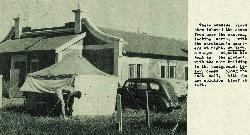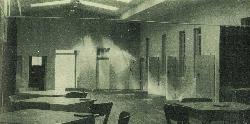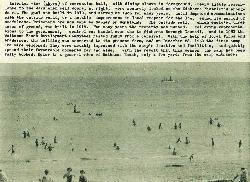27
Churchill Park Motor Camp
Gisborne's unique Churchill Park Motor Campunique because surely nowhere else in the world is there a holiday camp —which was once a goal— was thronged with happy campers this season. They were camped in the old cells (nor modern bunkrooms), in the extensive grounds outside, and at one stage even in the fields outside the big stone walls. So high were the praises sung of the camp's location and facilities that we took a camera along and asked Jillian Phillips, of Wellington, Illma Sherratt, of Auckland, and Adrienne Higgle, of Wanganui, to show us around.
28
Jillian, Illma and Adrienne demonstrate some of the camp's facilities, which in the words of one widely-travelled visitor, "beat anything to be found in Butlin's". (Butlin's are the widely-publicised British commercial holiday camps. )
Bedrooms opening on to recreation hall are favourites of campers. This one sleeps up to six, and was once the prison's "padded cell". Others sleep 2, 3 and 4.
Jillian and Adrienne wake to the sun streaming in the window of their bedroom, with no bars to impede it.
Modern equipment, with porcelain band-basins, is a feature of the ablution block. Facilities here are voted best in the country.
Twenty-four porcelain-finished gas rangettes, eight stoves with ovens, and eight refrigerator compartments give camp adequate and modern cooking facilities.
29
30
Although the camp has been in existence only a little more than a year, good progress has been made in transforming it from a gaol into a holiday "home-away-from-home".
A start has been made with the task of beautifying the camp's grounds, one of the main items of which will be the growing of greenery to cover the 10ft. stone wall which entirely encloses the camp.
31
Of recreation hall, with dining alcove in foreground, bears little resemblance to the days when cell doors, at right, were securely locked on the Gisborne district's wrongdoers. The gaol was built in 1910, and served as such for many years, until improved communications with the outside world, or a notable improvement in local respect for the law, ended its period of usefulness. Prisoners are now sent to Napier or Auckland. The outside wall, which enclosed three acres of ground, was built in 1918. For many years the property was unused. Following representations to the government, control was handed over the to Gisborne Borough Council, and in 1953 the Waikanae Beach Development Committee raised funds from a carnival. With the help of local firms and tradesmen, the building was converted to its present form, and on December 23, 1953 the first campers were welcomed. They were notably impressed with the camp's location and facilities, and quickly spread their favorable comments far and wide, with the result that this season the camp has been fully booked.
Is a general view of Waikanae Beach, only a few yards from the camp entrance.


